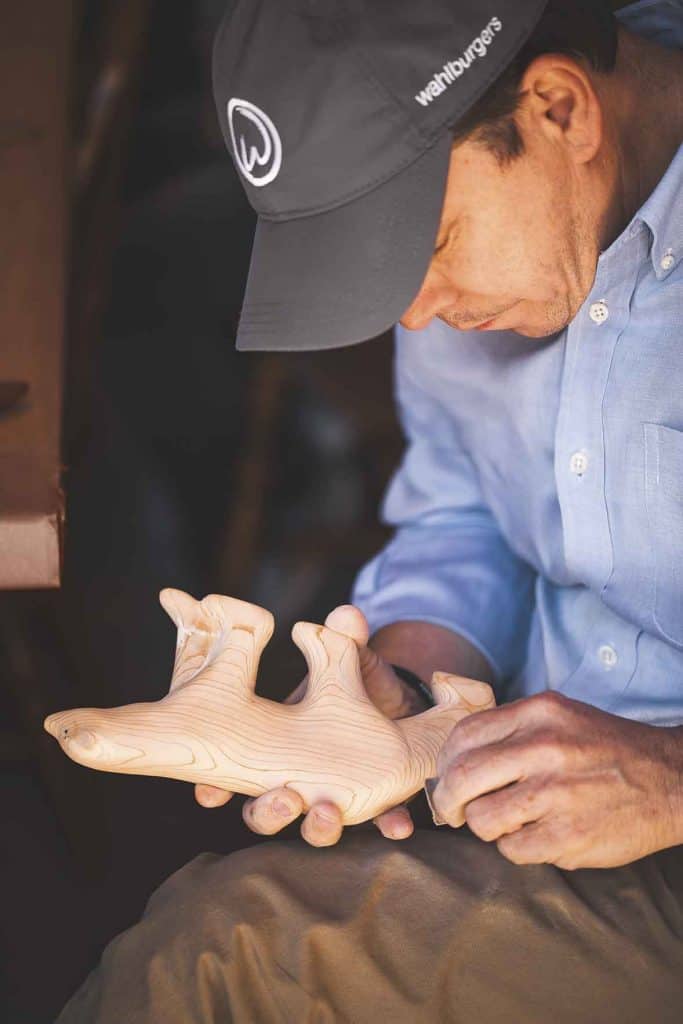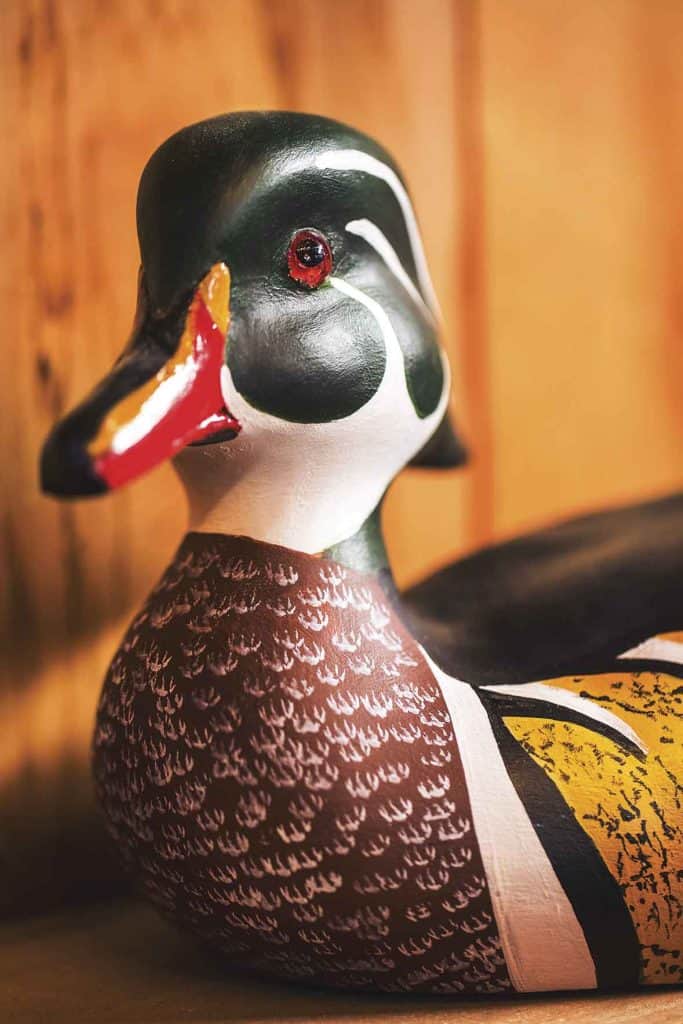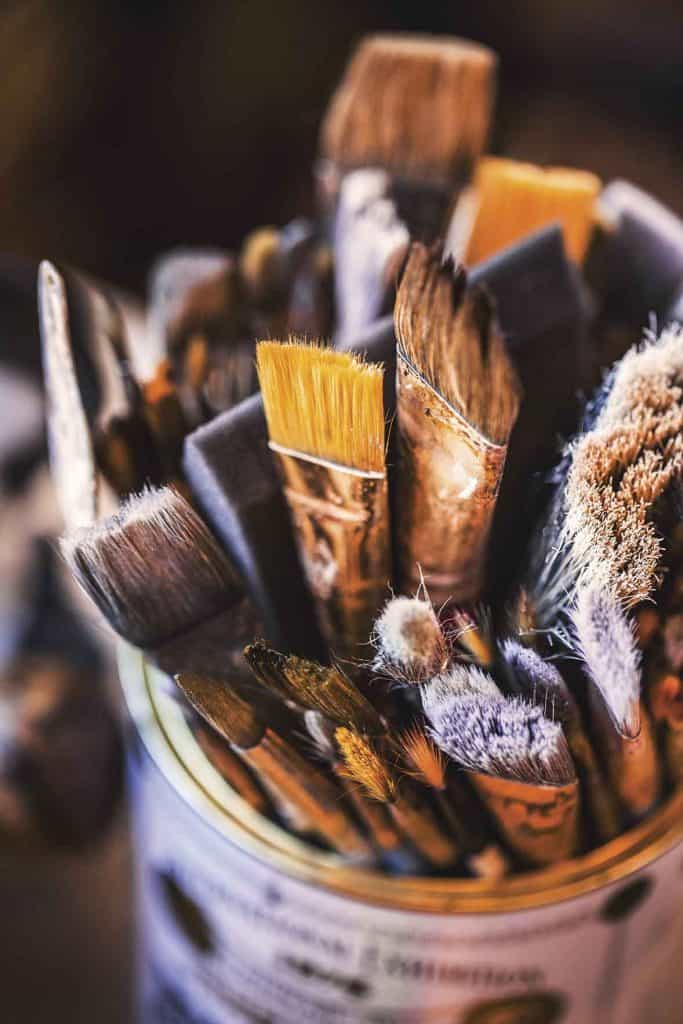Hingham’s celebrity chef soothes his soul by carving decoys and other wood creations
By Dave Kindy Photography by Derrick Zellmann
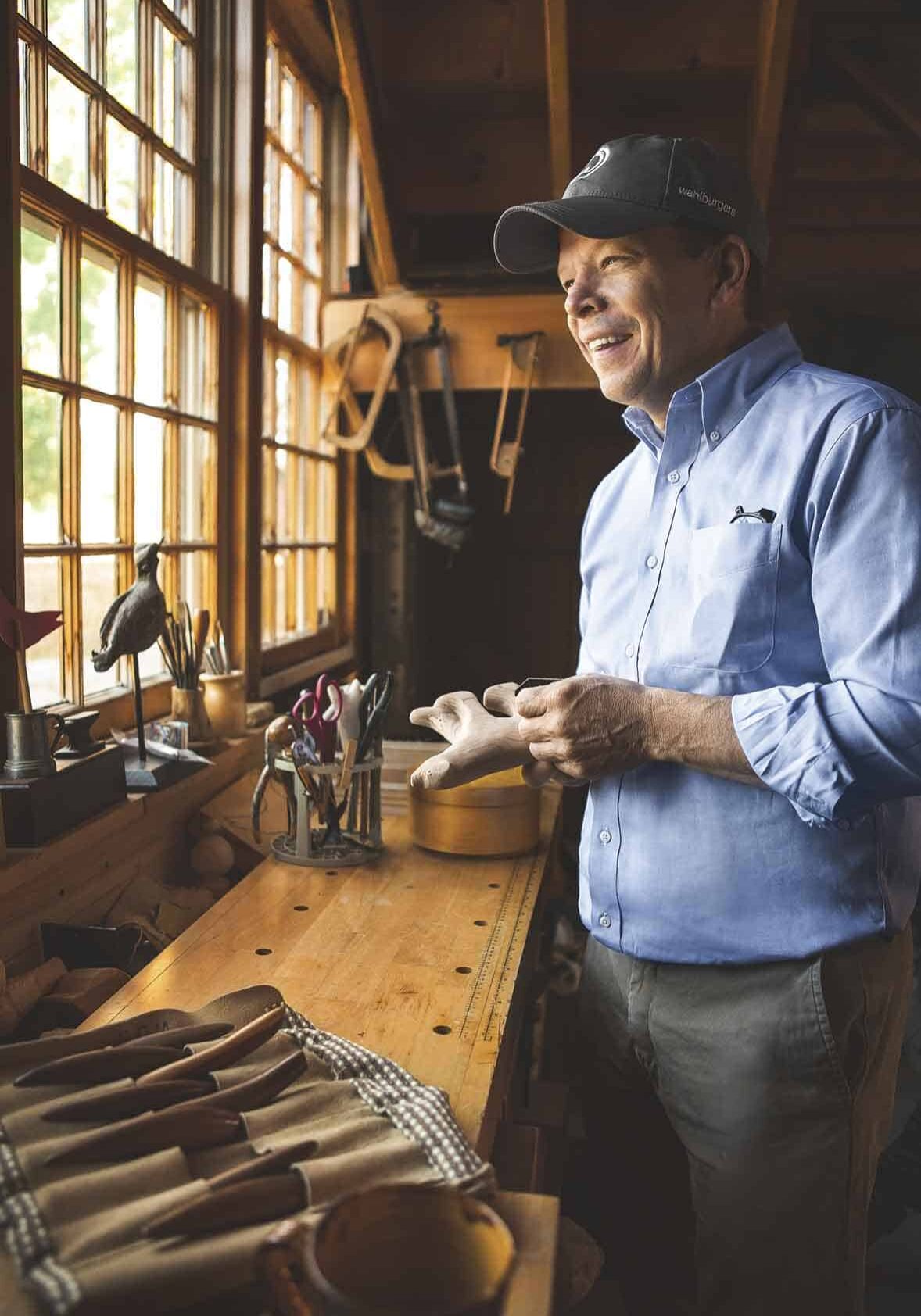
When Paul Wahlberg gets home to Hingham after work, the house is usually dark and quiet. His wife and two children have gone to bed and the celebrity chef is alone with his thoughts after a long day behind the grill flipping 800 or more hamburgers.
Wahlberg is exhausted, but he is not ready for sleep. His mind is restless as he replays his day in his head. Did he plate that meal right? When will the new equipment arrive? Did he remember to order those out-of-stock ingredients? The treadmill of thoughts does not slow down.
Wahlberg reaches into his bag and pulls out a wooden object. He slowly turns it over in his hands and inspects his handiwork from the previous session. Then he probes the bag again and comes out with a sharp knife. Quietly, gently, reverently, Wahlberg begins to whittle the form, scraping with intent as wood chips are released and a latent form begins to emerge. Soon, his mind is at ease and he is ready for bed.
“It’s brain-clearing,” says Wahlberg. “I come home and do this to unwind. I sit in the kitchen late at night not making noise or waking anybody up. It shuts off my mind. It relaxes me so I can get to sleep. It’s my therapy”
He adds with a chuckle, “It’s better than drinking.”
Wahlberg is the driving force behind Wahlburgers—the growing international chain of family burger restaurants—and chef at Alma Nove in Hingham, the fine-dining restaurant he founded with his acting and musically inclined brothers, Mark and Donnie. He is also a reality TV star: “Wahlburgers,” which follows his family while running the burger chain, just concluded its 10th and final season on A&E this past summer.
To say the pressures are enormous is an understatement. Wahlberg is on the go constantly. When he is not behind the grill at one of his restaurants or on the Wahlburger food truck, he is traveling across the country for meetings, contract signings and appearances.
There’s a lot to do—and a lot to remember. That’s why whittling and carving have become such an important part of Wahlberg’s life. This creative outlet helps him disengage from the workaday whirlwind and bring the focus from the ethereal notions ricocheting through his mind to the present physical form taking shape in his hands.
Wahlberg considers himself an amateur, but his carvings belie his pleadings. His delicately detailed sperm whale, mounted on a polished piece of driftwood, is simple yet elegant, capturing the majesty of this regal creature in three-dimensional splendor. His other carvings of ducks and shorebirds also display a distinct talent.
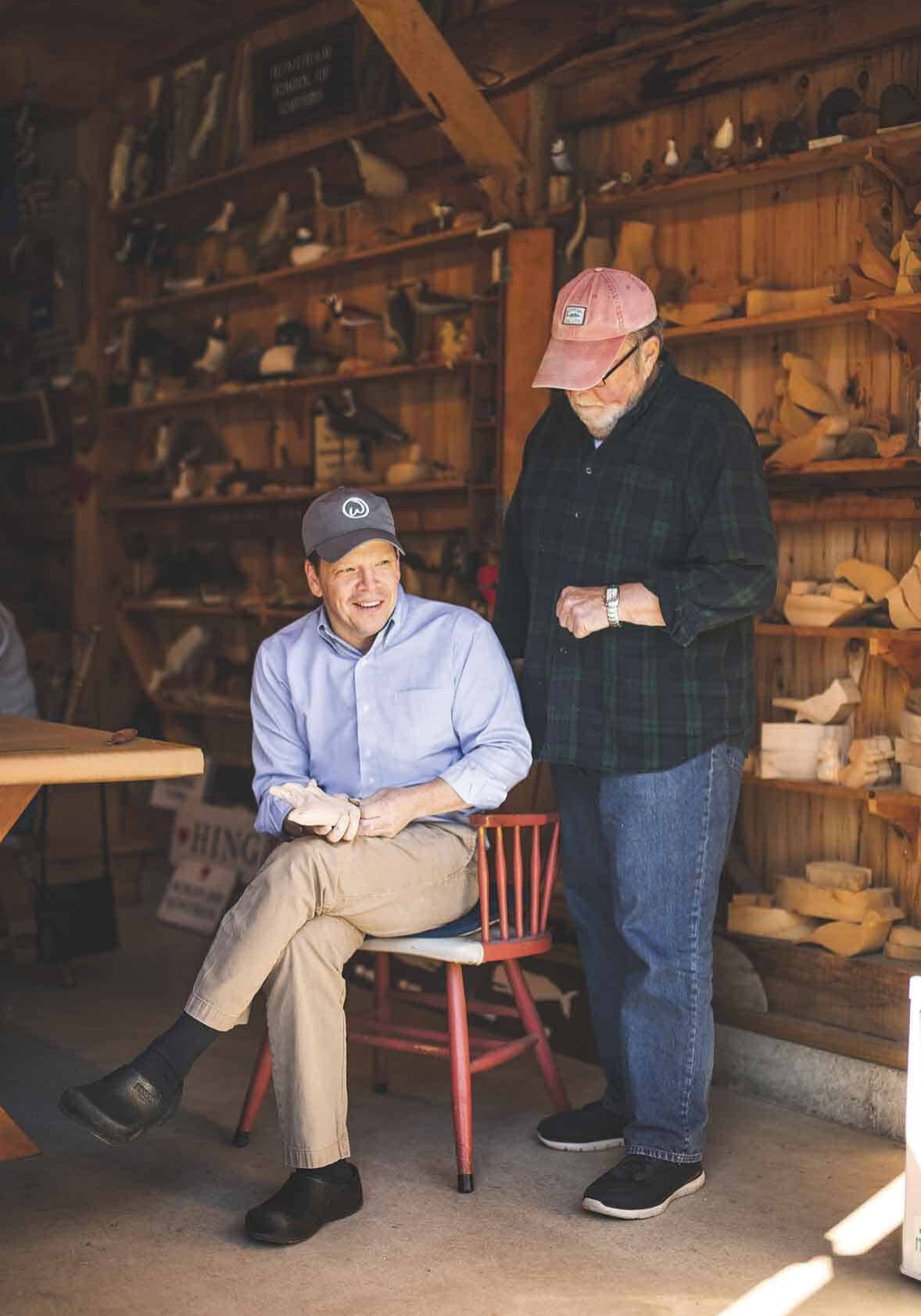
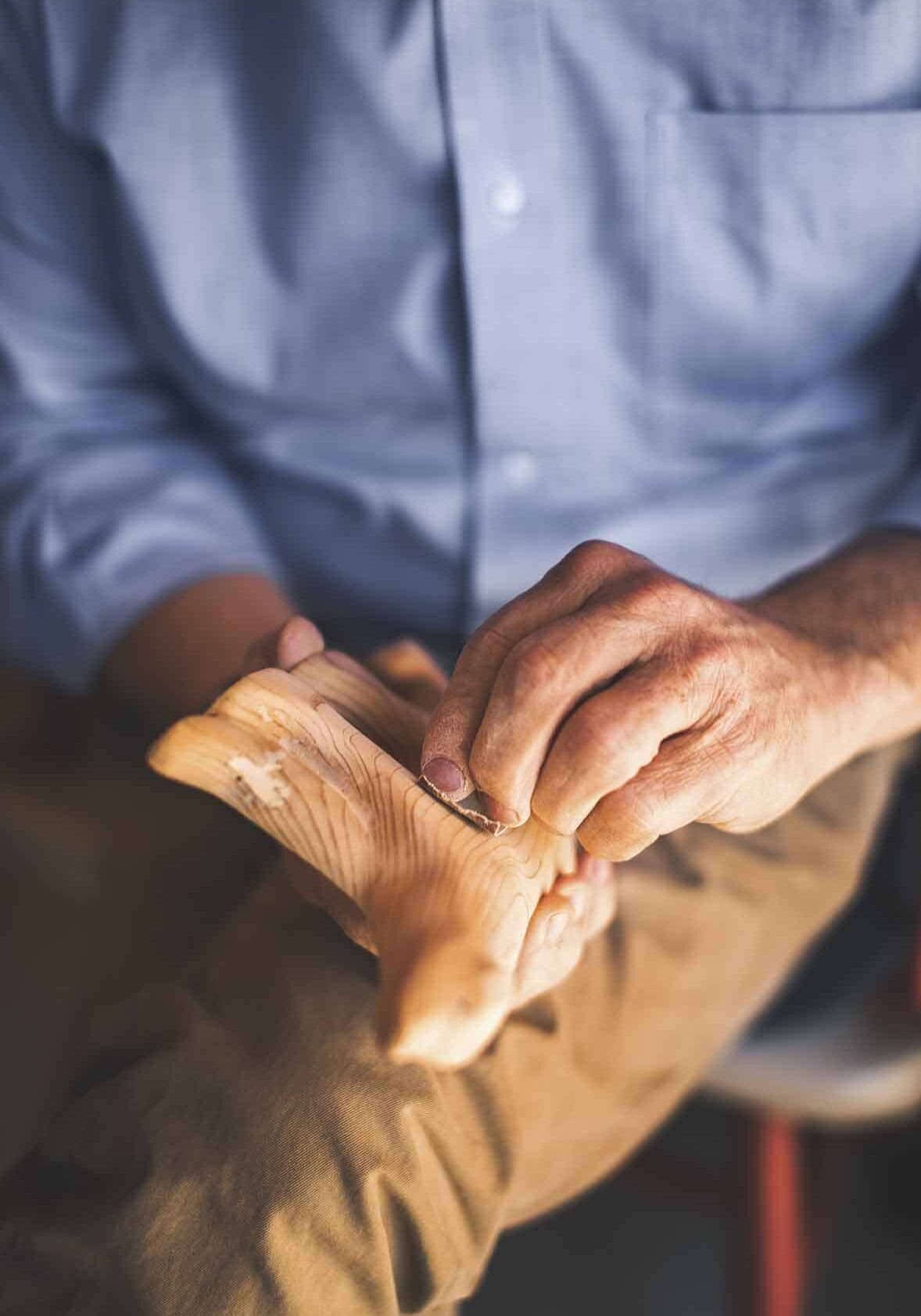
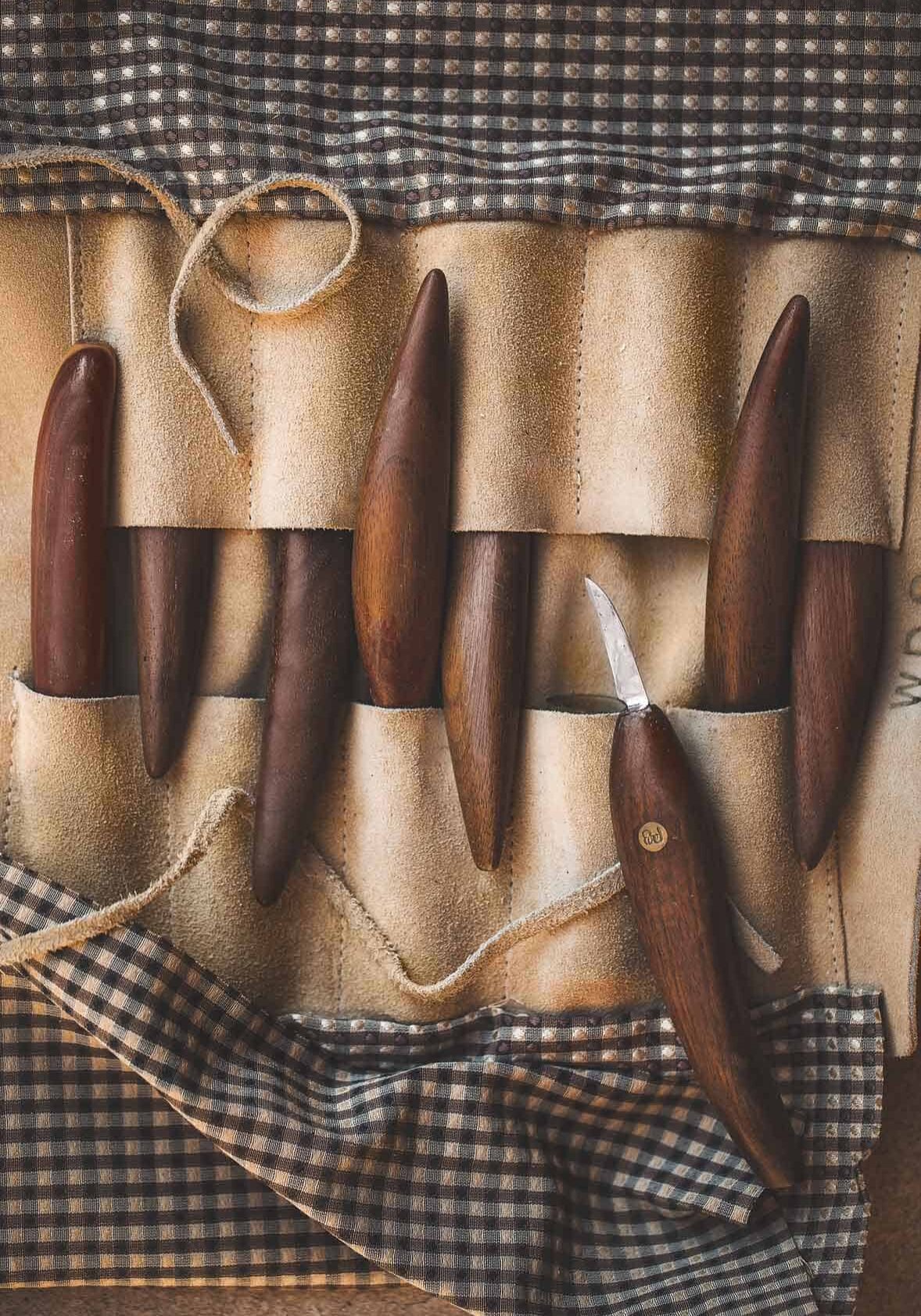
As counterpoint to a compliment, Wahlberg produces his first project: a polar bear. He begins to tear it apart, pointing out all of the errors and miscues. He complains how it just never matched his vision for what he hoped to accomplish.
“I still work on it from time to time. I drag it out, start to carve again, get frustrated and then put it away,” he sighs.
His hobby has also led him to endearing friendships with people he might not have otherwise met. Wahlberg has a close relationship with Bill Sarni, his carving mentor. The celebrity chef was dragged—reluctantly—to a class taught by Sarni. The experience opened his eyes to a new world of creativity, contemplation and companionship.
“There’s camaraderie in getting together with people who share the same interests,” says Wahlberg. “Sort of like golf, but I’m not losing any golf balls. I find enjoyment in a shared experience with other people. It has opened up a huge world for me.”
Sarni is the man who helped him gain that global perspective. A former engineer, Sarni needed something to occupy his time in retirement, so he decided to learn how to carve decoys, the wooden shapes used by hunters to attract ducks. He soon became an expert and is now regarded as one of the top traditional craftsmen in the country. His realistic duck decoys and other carvings have earned him countless prestigious awards.
“Paul is good, but he needs to get serious about it,” Sarni teases his friend. “His day job gets in the way of his carving.”
“Hey, I’m still learning,” Wahlberg chimes in with mock indignation. “I have sausage fingers, so it’s harder for me!”
Wahlberg gets together with Sarni whenever his schedule permits. The two usually meet a couple of times a week in the barn behind Sarni’s Hingham home. While it is the place where carving classes are held, it is really a refuge for retreat: a combination man shed and artist’s garret.
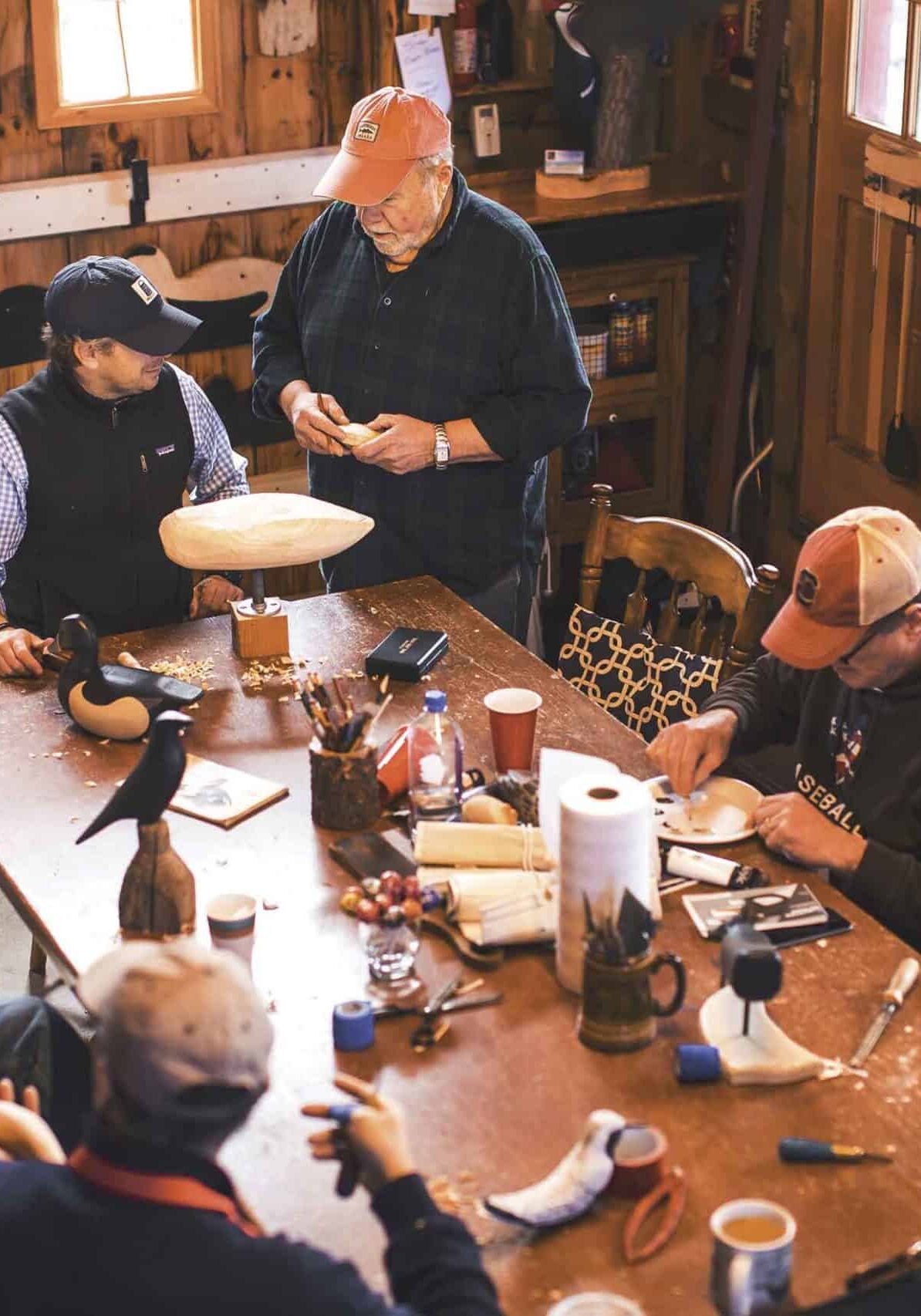
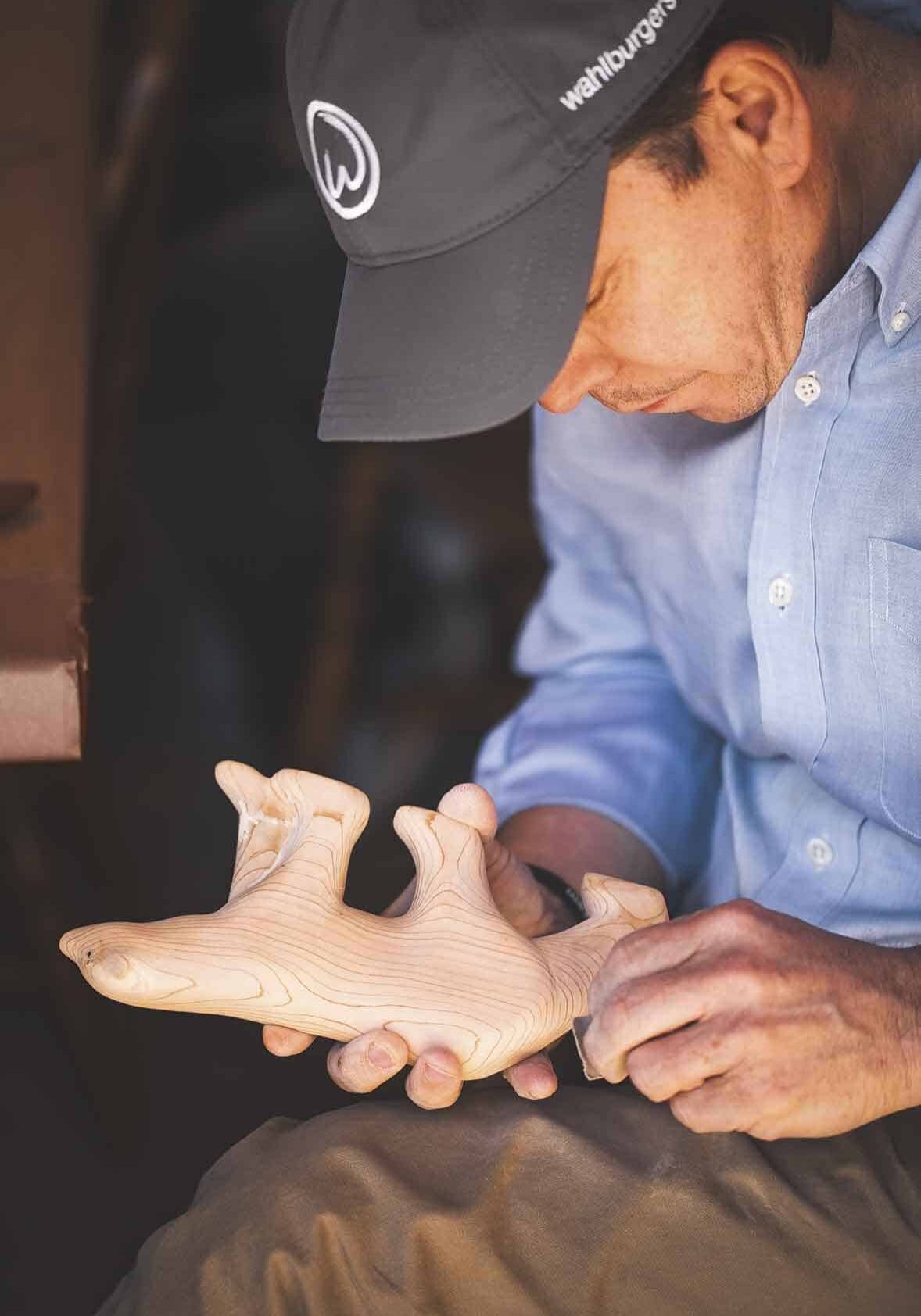
Sarni built the barn in 2012 to house his hobby. The rustic interior features rough-hewn timbers, a wood-burning stove—“That’s for disposal of failed attempts,” Wahlberg jokes—and decoys. Hundreds of them—all carved by Sarni—of all shapes and sizes line the walls. It is a carver’s paradise.
A large table sits in the middle of the barn. This is where Sarni and Wahlberg sit for “man time”—carving, chatting and kibitzing. The only interruption is when Sarni’s wife, Janet, strolls out to the barn with coffee, homemade blueberry muffins and other tasty enticements.
“This is why I’m on a diet,” Wahlberg says with a smile. “I love this woman!”
Sarni has emerged into one of the premier carvers in the country. Like Wahlberg, he took up the endeavor as a hobby. He took classes, read books, learned all he could, carved constantly and soon evolved into an award-winning artist. His duck decoys have won best of show in competitions around the country and he is in demand to speak as a lecturer at high-profile shows and auctions.
Sarni has examples of the work of some of those experts, including Elmer Crowell, Joe Lincoln, Charles Hart and Charles Safford—an interesting twist of fate considering his work is often compared closely with these 19th and early 20th century masters. Sarni takes it all in stride.
“It’s just something I enjoy,” he says with a shrug, adding, “I also love collecting antique decoys by the old Hingham and South Shore carvers. Their work is so beautiful.”
For Wahlberg, carving is a way of soothing the soul and artistically releasing his inner tensions. It provides him with an outlet that cooking does not sate. While he can be creative as a chef, dreaming up and preparing inspired meals for diners, it is only an ephemeral, transient challenge that is gone in a swallow. Plus, it’s also work for him.
“Once the food gets eaten, it’s gone,” he says. “The carvings last. And they soothe me.”
To learn more about folk artist Bill Sarni, visit wdsdecoys.com

